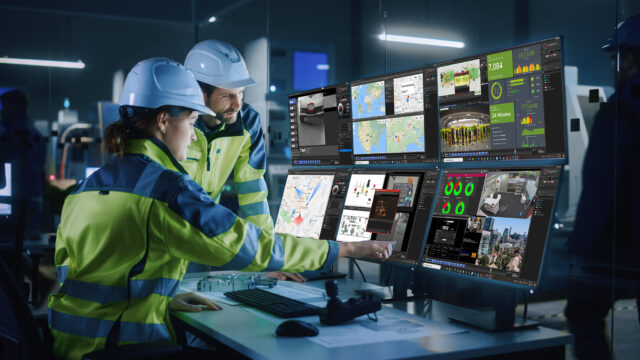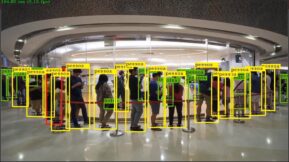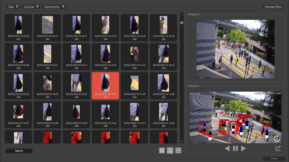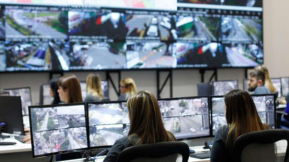The economics of VMS solutions
Choosing a Video Management Software (VMS) solution for a CCTV surveillance application is often considered to be a more expensive than an NVR solution.

That may be true in capital expenditure terms, however, when considering the system’s total cost of ownership; the multitude of operational savings; and the advanced functionality, system resilience, flexibility, scalability, and sheer capability offered; then the most cost-effective option swings back in favour of the VMS.
In this article, Nick Bowden, Managing Director of Digifort UK, supplying and supporting the Digifort VMS and analytics platform in the UK, explains the true economics of VMS solutions and their many advantages.
This article is designed provide integrators and end-users with some insight into the greater value and flexibility offered by VMS solutions like Digifort and what to look for when designing your system.
One-time-buy VMS licensing
Digifort is unique in having a one-time-buy license structure, with no annual maintenance fees. Despite the VMS software being regularly updated, enhanced and maintained, there are no additional costs for this throughout the lifetime of the CCTV system. The VMS servers running the VMS software also have the option for a seven-year warranty, after which, the software can be transferred to new servers for the next seven years, and beyond.
VMS vs CMS
A manufacturer’s CMS (Central Management Software) is often free, which sets the expectation that a VMS should also be free. A CMS is designed to control its own range of NVRs, DVRs, and cameras as a priority. Most NVRs lack processing resources for high video streaming rates from cameras and cannot support many concurrent users viewing the system, without creating a bottleneck. When this is the case, the NVR solution often requires additional PCs for video processing and streaming, adding another layer in to the architecture and increasing costs. An open platform VMS like Digifort will work with over 10,000 individual camera models and 400 CCTV camera brands. Instead of ONVIF integration, which is a universal, generic standard used by most NVRs, the integration is by SDK (software development kit). This is the deepest and most capable type of integration, enabling control of important camera features, essential for mission-critical projects, such as PTZ lights, edge recording, edge analytics, telemetry, wash & wipe, auxiliaries and many more. The VMS also allows for extremely high levels of performance based on server processing power, such as real time frame rates and the ability to handle multiple, concurrent users.
Re-using legacy equipment
Relying on only one camera and recorder brand for large CCTV deployments is too limiting a strategy for larger projects and simply not future proof. Larger projects need the flexibility to reuse legacy equipment and the ability to add new brands and technologies that bring new functionality and enhance the site operation. Relying on a single brand approach will often rule out this flexibility and compromise future site operation.
Deploying a VMS like Digifort, with wide SDK integration, not only gives the flexibility to reuse existing site cameras to reduce camera obsolescence, but it also allows budgets to be spread over several years, as old equipment is phased out for new. Unlike a CMS, Digifort is an open-platform and will not lock the end user into a single brand, going forward.
IT infrastructure benefits
Digifort has a distributed IT architecture. Servers are used for video processing and are connected to cameras via a network. By comparison, a CMS usually controls multiple NVRs – not the cameras directly. It is worth noting that Digifort has the flexibility to control NVRs too, like a CMS, and can coordinate an estate of different NVR brands. However, DVRs and NVRs will often present a video processing performance bottleneck due to their limited processing capability at 10’s of Mega bits /sec compared with servers operating at multi - Giga bits / sec – many factors more.
VMS servers offer RAID options as standard for both OS and storage. This guarantees ‘uptime’; prevents data loss; and ensures data protection compliance. Further resilience can be added with server failover, mitigating the effects of server or network failure. This is essential for high-security, mission-critical applications and is well beyond the capability of most NVRs.
VMS servers offer intrinsic safeguards too, such as alerts, warnings, and messages if faults are detected in the server, OS, or storage drives, predicting and often preventing failure. Server solutions also use up less hardware per camera, reducing power consumption, rack space and air conditioning requirements (in an IT room) utilising an architecture that is intrinsically more reliable. This means less replacement, maintenance, energy and support costs.
Scalability
VMS systems offer incredible scalability - expanding camera channel numbers with additional licenses and increasing functionality with software modules. VMS systems do not need to expand in 8, 16 or 32 channel “blocks” like NVRs, so only the channels needed are paid for. When more processing power is required, servers are added to the system without affecting live operation. More than 100x Full HD cameras can be processed in each 2U server, with a combined frame rate exceeding 2,500 FPS – significantly more than any NVR.
Added value
Digifort has many software module options to enhance site functionality, without redundancy, such as LPR, analytics and facial recognition. The intelligence this brings to the system adds incredible value. For example, it gives a vital insight into human behaviour and risk, such as triggering alarms from people counting, footfall, loitering and dwell times; recognising objects like guns, PPE, and fire; and identifying unwanted visitors. Human tasks may be automated, such as opening gates and barriers. Motion, trip wires, loitering and wrong direction, plus much more, can help site management and security – all adding value.
Comparison: VMS to NVR
Recording profile: 100 cameras, 1080p, 13FPS for 31 days
Storage required: 64TB
| Feature | VMS | NVR |
Channels | 100 | 32, 32, 32, 4 |
| Cameras | Any brand / SDK* | Own brand / ONVIF** |
| Rack space / size | 2U | 7U (2U, 2U, 2U, 1U) |
| Warranty Hardware Software | Server 7 years Life | NVR 3-5 years NVR 3-5 years |
| Storage and OS Storage Operating System | HDDs RAID 5 Mirrored SSD | HDD non RAID Flash |
| Expansion | Licenses | Additional NVRs |
| Additional functionality | LPR, FR, Analytics | Add h/w |
| End of warranty | 7 years - replace server only | 3 - 5 years replace all NVRs |
*SDK - Software Development Kit - deep integration with full feature set
**ONVIF - Generic integration - limited features



